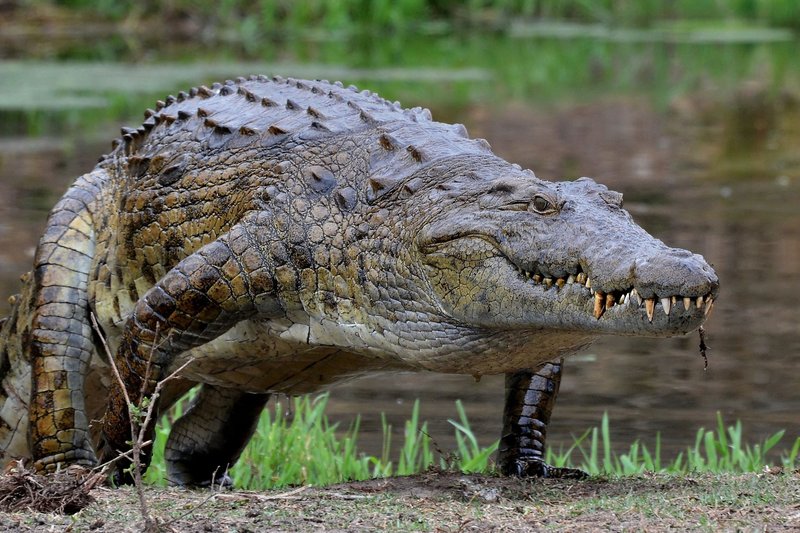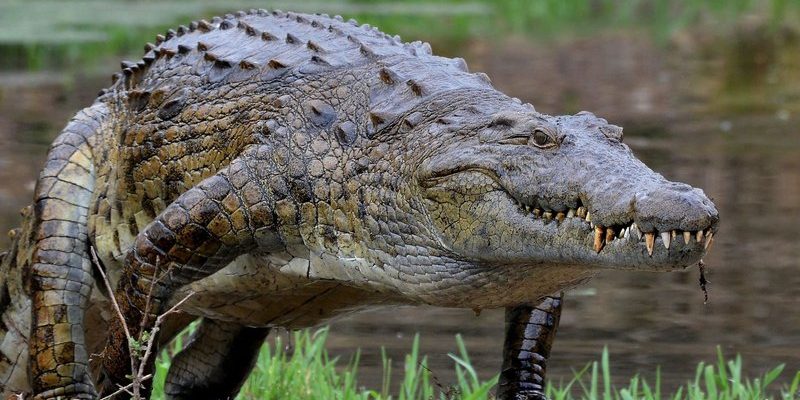
Nile crocodiles are not just survivors; they are masters of their habitat. Found primarily in the freshwater habitats of Africa, they have developed impressive techniques to cope with extreme temperatures, scarce food sources, and fluctuating water levels. It’s like they’ve got a cheat code for life in the wild. Let’s explore how these stunning reptiles manage to not only live but thrive in some of the most challenging conditions on Earth.
Physical Adaptations to Extreme Conditions
One of the first things you’ll notice about Nile crocodiles is their tough, scaly skin. This isn’t just for looks; it plays a crucial role in their survival. The scales act like armor, protecting them from potential injuries and harsh environmental factors. But here’s the thing—these scales also help in conserving water. In a hot, dry environment, maintaining hydration is vital, and their tough skin minimizes water loss.
You might be wondering about their size. Nile crocodiles can grow up to 16 feet long, and this impressive bulk isn’t just for show. Their size allows them to store energy and withstand periods when food is scarce. The larger they are, the more resistant they become to starvation. It’s like having a long-term food stash ready for tough times!
Moreover, their unique jaw structure aids in another interesting way. Nile crocodiles can hold their breath for up to two hours underwater. This means they can stay hidden from prey or predators for extended periods, making them effective hunters. Imagine being able to sneak up on dinner while barely being seen!
Behavioral Strategies to Thrive
Survival isn’t just about having the right body; it’s also about knowing how to behave in your environment. Nile crocodiles are strategic and opportunistic hunters. They use *ambush tactics*, lying still and waiting for the right moment to strike. This patience is a key survival trait. By not wasting energy on unnecessary movements, they conserve energy for when it truly counts.
During extreme heat, you might see them basking on rocks or riverbanks. By soaking up sunlight, they can regulate their body temperature. But here’s a fun twist: when it gets too hot, they’ll often slide into the water and cool down. It’s like nature’s air conditioning system! They instinctively know when to stay out of the sun and when to take a dip, ensuring they remain comfortable and maintain their energy levels.
Another fascinating aspect is their social behavior. While many reptiles are solitary, Nile crocodiles exhibit social interactions, particularly during the breeding season. They communicate with each other through a range of vocalizations, which can be essential for mating and nurturing their young. This social dynamic can play a key role in their overall survival in challenging environments.
Diet Flexibility and Hunting Techniques
Nile crocodiles are not picky eaters, which is a significant advantage when resources are low. They have powerful jaws and sharp teeth that allow them to consume a wide variety of prey, from fish and birds to mammals. This flexibility in diet means they can adapt to what’s available in their environment, which is essential for surviving in harsh conditions.
Their hunting technique is also fascinating. Nile crocodiles can perform a technique called the “death roll,” where they grab prey and spin rapidly in the water to disorient and tear apart the food. This method saves them energy and enhances their efficiency, allowing them to catch larger prey than they might manage otherwise.
In addition, their excellent night vision allows them to hunt effectively after dark when many animals are less alert. This nocturnal behavior means they can take advantage of a quieter environment and find food when other predators are sleeping.
Adaptation to Climate Change and Habitat Alterations
As we face changing climates, Nile crocodiles showcase remarkable resilience. They can adjust their nesting habits based on seasonal rainfall patterns. For instance, in years of heavy rainfall, they might choose to nest in different areas to protect their eggs from flooding. Their ability to adapt to changing environmental conditions is a survival skill that many species would envy.
Interestingly, these crocs can also tolerate a range of salinities, which allows them to move between freshwater and brackish environments. In periods of drought, they can venture into coastal areas to find food, making them incredibly versatile and resilient.
But it’s not just about adaptability; it’s also about persistence. Nile crocodiles can sometimes migrate over long distances in search of food and suitable nesting sites. This instinctual behavior ensures they continue to thrive, even in fluctuating conditions.
Interactions with Other Species
While Nile crocodiles are apex predators, they also play a critical role in their ecosystem. Their presence helps to regulate fish populations, which can contribute to the overall health of aquatic environments. This balance is essential for maintaining biodiversity and ensuring that other species can thrive.
However, their interactions aren’t always positive. Nile crocodiles can sometimes compete with other wildlife for resources. For example, when food is scarce, they may engage in aggressive behaviors with other predators. This can lead to conflicts, but it also highlights their role in the natural hierarchy of their ecosystems.
You might find it fascinating that these crocodiles can also have symbiotic relationships. Birds like the oxpecker often sit on their backs, eating parasites and dead skin. This not only helps the croc stay healthy but also provides the bird with a meal. It’s a win-win situation!
Conservation and Human Impact
Despite their impressive adaptability, Nile crocodiles face threats from human activities. Habitat loss due to urbanization, agriculture, and pollution can significantly impact their populations. Conservation efforts are crucial to ensuring these fascinating creatures continue to thrive in their natural habitats.
In many regions, local organizations work tirelessly to protect crocodile populations and their ecosystems. This includes creating reserves that safeguard their habitats and promoting awareness about the importance of these animals in maintaining ecological balance.
You might not think of them as endangered, but understanding the challenges they face is essential for their continued survival. Supporting conservation efforts isn’t just about saving crocodiles; it’s about preserving the entire ecosystem they inhabit.
Nile crocodiles are extraordinary survivors, demonstrating incredible adaptations to thrive in harsh environments. From their physical traits to their hunting strategies, these reptiles showcase nature’s ingenuity. Though they face challenges from climate change and human activities, their resilience and versatility give us hope.
As we learn more about these fascinating creatures, it’s essential to support efforts to protect them and their habitats. After all, every crocodile contributes to the balance of its ecosystem, reminding us that every creature has its role in the grand story of life on Earth. Understanding how they survive not only deepens our appreciation for them but also highlights the importance of conservation.

